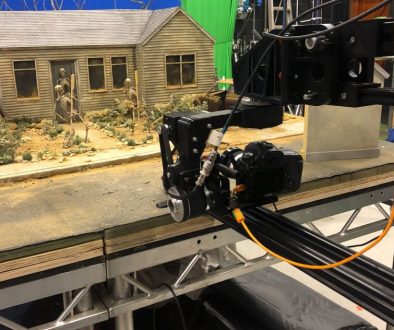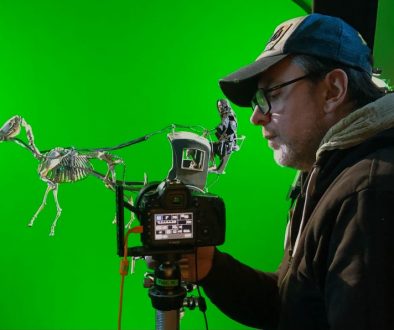Travel Photography
with the Fujifilm X-t2
The Fujifilm X-T2 is marketed as a high-quality lightweight do all camera, but is it any good for travel photography? Photographer Matt Widgery took it for a spin in Europe visiting 12 countries in two months to put it through its paces.
My journey with the Fujifilm X cameras started back in 2014 with X-Pro 1, the XF 18mm f/2 and the XF 35 f/1.4. I was still shooting Nikon professionally at that point but wished for the day that Fuji would bring out a camera that focused properly so I could use this fun, beautiful little system in my day job. The Fuji X-T1 was the answer to my prayers and I bought two of them, sold my Nikons and never looked back.
 Fast forward to March 2017 and I was still using these bodies. After all, they still delivered great images, so why change? But I did. I pulled the trigger on the X-T2 with the battery grip for a 6-month adventure driving through Europe in a van. Here’s why I did that, and what my thoughts are after the first two months and 12 countries with the Fuji X-T2. As I struggled across the windy car park to the NEC in Birmingham in March to the 2017 Photography Show I had absolutely no intention of buying a new camera. But there was a great offer on an X-T2 with the battery grip thrown in for free as well as a pretty nice looking Domke messenger bag with a rather fetching leather Fuji logo stitched onto the flap. I figured I would have bought the T2 eventually anyway, and at least this way I got a nice deal on it. The battery grip is important by the way. Unlike the T1 which just gives you more juice, the T2’s grip functionally improves the performance of the camera as well: Speeding up the AF and allowing more record time to the SD card when shooting 4K. It’s a must have in my opinion. You’re not going to unlock the full potential of the camera without it.
Fast forward to March 2017 and I was still using these bodies. After all, they still delivered great images, so why change? But I did. I pulled the trigger on the X-T2 with the battery grip for a 6-month adventure driving through Europe in a van. Here’s why I did that, and what my thoughts are after the first two months and 12 countries with the Fuji X-T2. As I struggled across the windy car park to the NEC in Birmingham in March to the 2017 Photography Show I had absolutely no intention of buying a new camera. But there was a great offer on an X-T2 with the battery grip thrown in for free as well as a pretty nice looking Domke messenger bag with a rather fetching leather Fuji logo stitched onto the flap. I figured I would have bought the T2 eventually anyway, and at least this way I got a nice deal on it. The battery grip is important by the way. Unlike the T1 which just gives you more juice, the T2’s grip functionally improves the performance of the camera as well: Speeding up the AF and allowing more record time to the SD card when shooting 4K. It’s a must have in my opinion. You’re not going to unlock the full potential of the camera without it.
As I struggled across the windy car park to the NEC in Birmingham in March to the 2017 Photography Show I had absolutely no intention of buying a new camera. But there was a great offer on an X-T2 with the battery grip thrown in for free as well as a pretty nice looking Domke messenger bag with a rather fetching leather Fuji logo stitched onto the flap. I figured I would have bought the T2 eventually anyway, and at least this way I got a nice deal on it. The battery grip is important by the way. Unlike the T1 which just gives you more juice, the T2’s grip functionally improves the performance of the camera as well: Speeding up the AF and allowing more record time to the SD card when shooting 4K. It’s a must have in my opinion. You’re not going to unlock the full potential of the camera without it.

But that comes with its own drawbacks, especially for travel. The reason I never used the battery grip for the Fuji X-T1 was to maintain the minimal form factor of the camera, the central ethos of which was a why I jumped ship from my big clunky Nikons in the first place. With the battery grip, and one of the f/2.8 zooms on the front you’re really getting close to DSLR heft, and for travel that ain’t good man, that ain’t good at all. On this trip, I’ve climbed Italian Alps, walked the length and breadth of Athens and the Rambouillet forest and fought my way through the tightly packed Paris Metro and Chania street market. Carrying big camera gear around is far from ideal in those situations. However, taking the grip off and slapping one of the smaller primes on the front or even the excellent little Fujifilm XF 18-55mm kit lens gives you a fantastic camera to walk around during the day and hoover up snapshots and you can break out the bigger glass and the battery grip for shooting the big set piece stuff you’ve got planned. Having the option to have either a complete powerhouse or a little walk around camera all in one body is incredibly useful.

If you’re coming from the X-T1 then the exterior of the Fujifilm X-T2 feels like a minor tweak at best. They sorted out the crappy doors, idiosyncratic dials and the desperately unsatisfactory feel to the buttons. They’ve added a marginally better mechanism to the tilty flippy screen but it still doesn’t flip out to face you so you can’t use it for vlogging which is a real pity because it would be perfect in every other way. But when it comes to raw image-making power, the Jedi Knights in the Fujifilm development dungeons have worked some dark magic with the new X-Trans III sensor and X-Processor Pro processor. I’m not going to pretend I know what they’ve done but my files are sharper, more detailed, better in low light and have an improved tonal response to processing, in both the shadows and the highlights. The improvement from the X-Trans II is nothing short of miraculous in just a single generation.

Travel photography is rough on cameras. You’ll be abusing that little black box in just about every way that is ill-advised for both longevity and resale value. You’ll expose it to sea water, rocks, sand, ice, heat and dust. It’s disappointing to report then, that I broke the screen on my first T2 body within just a few days. I can’t extrapolate any conclusions about the build quality of the screen from this one experience as it’s entirely possible that I did something dumb or clumsy and didn’t notice. But it was in a very well padded camera bag when it happened, and I’m famous for doing dumb and clumsy stuff to cameras, so it is noteworthy that this hasn’t happened before. Nevertheless, everything else feels solid and well built. My T1’s both had the warped door problems and the peeling rubber problems. The doors at least are plastic, not rubber now, so that won’t happen, but only time will tell with the rubber grip.
One of the best features about the Fujifilm X-T2 for travel photography trips is the fact you can charge the battery from USB. I can have the camera with me in the front of the van while I’m driving, plugged into the cigarette lighter and no matter how much I stop during the day to take photos it’s still fully charged at night. Genius! All camera manufacturers take note, please. Also, the fact that you can charge two batteries at once in the battery grip, even when the grip isn’t attached to the camera makes keeping a full set of charged batteries a breeze, even on the road.
The experience hasn’t been entirely positive though. Like many Fuji XT2 owners, I’ve been plagued by the dreaded freezing issue. This is where the camera occasionally won’t switch off until you take the battery out. Since battery life isn’t very good with any mirrorless cameras yet, habitually flicking the camera off in between shots is the only way of maintaining battery life. Back in the UK, I was shooting a lot of weddings and this would have been a disaster. I can’t begin to imagine feeling confident enough to shoot the first kiss or the bouquet toss with a camera that one in every hundred shots just bricks up. For the kind of work I do now it’s less of an issue, but still frustrating as hell, and falls so far beneath the acceptable standard for a pro/prosumer aimed camera it’s not even funny. Fujifilm has been great at fixing things like this in firmware in the past, but this feels like a beta product right now, at least on this issue, and the firmware needs to come quickly to prevent customers migrating back to Canikon who’s big, heavy antiquated boxes are at least reliable!
Like all Fujifilm cameras, they are flawed gems. They’re like Italian cars in that respect. There is always something infuriating about them that defies credulity, but the user experience is so wonderful when they’re working well that you accept their idiosyncrasies almost, almost willingly.
Conclusion
In summary, the Fujifilm XT2 is probably the best travel camera on the market today. It’s probably one of the best cameras on the market today, period. And knowing Fuji, it will only get better with firmware over the next few years.
If you are interested in how the other camera in the range stacks up you can take a look the Fujifilm X-Pro2 review.

About the author.
Matt Widgery is a photographer, photography trainer, and YouTuber. Originally from the UK, he now spends his time shooting and teaching around the world, living out of a van with a couple of bikes, way too many cameras, and a ukulele. His work is varied, encompassing portraiture, fashion, and landscapes.
Currently working on a book and exhibition, he is spending six months shooting in Europe. The book will be out in 2018.
You can check out Matt’s popular Youtube channel here.



